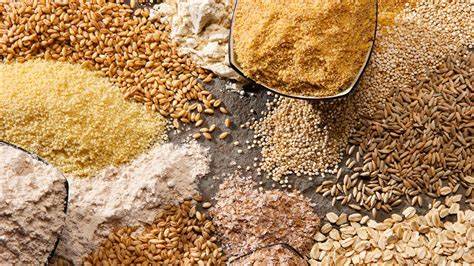Are you looking for a nutritious way to start your day? Curious about how ancient grains can elevate your breakfast game? Ancient grains have gained popularity for their impressive health benefits and nutritional profiles. In this article, we’ll explore how incorporating ancient grain into your healthy cereals can enhance your overall health and why you should consider making this switch.
What Are Ancient Grains?
Ancient grains are grains that have been cultivated and consumed for thousands of years. Unlike modern grains, which have been heavily processed and altered, ancient grains remain largely unchanged and offer a rich nutritional profile. Some of the most common ancient grains include quinoa, amaranth, farro, barley, and spelt.
Key Benefits of Ancient Grains
- Nutrient-Rich: Ancient grains are packed with essential nutrients, including vitamins, minerals, fiber, and protein. They offer a more robust nutritional profile compared to many modern grains.
- High in Fiber: The high fiber content in ancient grains promotes digestive health and helps maintain stable blood sugar levels.
- Rich in Antioxidants: Ancient grains contain antioxidants that help combat oxidative stress and reduce inflammation in the body.
- Versatile and Delicious: These grains add unique flavors and textures to your cereal, making your breakfast both enjoyable and nutritious.
Why Choose Ancient Grain Cereal?
Incorporating ancient grain into your healthy cereal can provide numerous health benefits and enhance your overall diet. Here’s why you should consider choosing ancient grain cereal over more conventional options:
Enhanced Nutritional Value
Ancient grain healthy cereals offer a richer nutritional profile than many processed cereals. They are typically higher in protein, fiber, and essential nutrients like iron, magnesium, and B vitamins. For example, quinoa and amaranth are complete proteins, meaning they provide all nine essential amino acids that your body cannot produce on its own.
Improved Digestive Health
The high fiber content in ancient grains aids in digestion and promotes regular bowel movements. Fiber also helps you feel full longer, which can assist in weight management and prevent overeating. Ancient grain cereals often contain more fiber than traditional cereals, making them a better choice for digestive health.
Better Blood Sugar Control
Ancient grains have a low glycemic index, meaning they have a slower impact on blood sugar levels compared to highly processed cereals. This can be beneficial for individuals managing diabetes or those looking to maintain stable energy levels throughout the day.
Reduced Risk of Chronic Diseases
The antioxidants found in ancient grains help fight oxidative stress and inflammation, which are linked to various chronic diseases such as heart disease, diabetes, and cancer. Including these grains in your diet can contribute to better overall health and a lower risk of developing these conditions.
How to Choose the Right Ancient Grain Cereal
When selecting an ancient grain cereal, it’s important to consider a few factors to ensure you’re getting a high-quality product:
Check the Ingredient List
Look for cereals that list ancient grains as the primary ingredient. Avoid cereals with added sugars or artificial ingredients, as these can diminish the health benefits of the ancient grains.
Look for Whole Grains
Choose cereals that are labeled as containing whole grains. Whole grains retain more of their natural nutrients and fiber compared to refined grains.
Verify Nutritional Information
Compare the nutritional information of different ancient grain healthy cereals. Opt for those with higher fiber and protein content, and lower sugar levels. This will help you get the most health benefits from your cereal.
Popular Ancient Grains For Cereals to Look For
Quinoa
Quinoa is a complete protein and an excellent source of fiber, iron, and magnesium. Its slightly nutty flavor and chewy texture make it a popular choice for ancient grain cereals.
Amaranth
Amaranth is another nutrient-dense ancient grain that is high in protein, fiber, and essential amino acids. It has a mild, slightly sweet flavor and works well in both hot and cold cereals.
Farro
Farro is an ancient grain with a rich, nutty flavor and chewy texture. It’s high in fiber and protein, and it adds a hearty element to your cereal.
Barley
Barley is known for its high fiber content and is a good source of vitamins and minerals. It has a slightly chewy texture and nutty flavor that complements other grains in cereal.
Spelt
Spelt is an ancient form of wheat that is higher in protein and nutrients compared to modern wheat varieties. It has a mild, slightly sweet flavor and can add a unique taste to your cereal.
Easy Ways to Incorporate Ancient Grains into Your Healthy Cereal
Mix and Match
Combine different ancient grains to create a custom cereal blend that suits your taste and nutritional needs. For example, mix quinoa with amaranth and barley for a nutrient-rich cereal.
Add Fresh Fruit and Nuts
Enhance the flavor and nutritional value of your ancient grain cereal by adding fresh fruit, nuts, and seeds. This will provide additional vitamins, minerals, and healthy fats.
Try Different Cooking Methods
Experiment with different cooking methods to find what you enjoy best. Some ancient grains, like quinoa and farro, can be cooked and used as a base for hot cereal, while others, like amaranth, work well in cold cereals.
Conclusion
Ancient grain cereal offers a host of health benefits, from enhanced nutrition to improved digestive health. By incorporating these nutrient-rich grains into your breakfast routine, you can enjoy a more wholesome and satisfying start to your day. Whether you prefer quinoa, amaranth, farro, barley, or spelt, there’s an ancient grain cereal out there to meet your needs and preferences.







